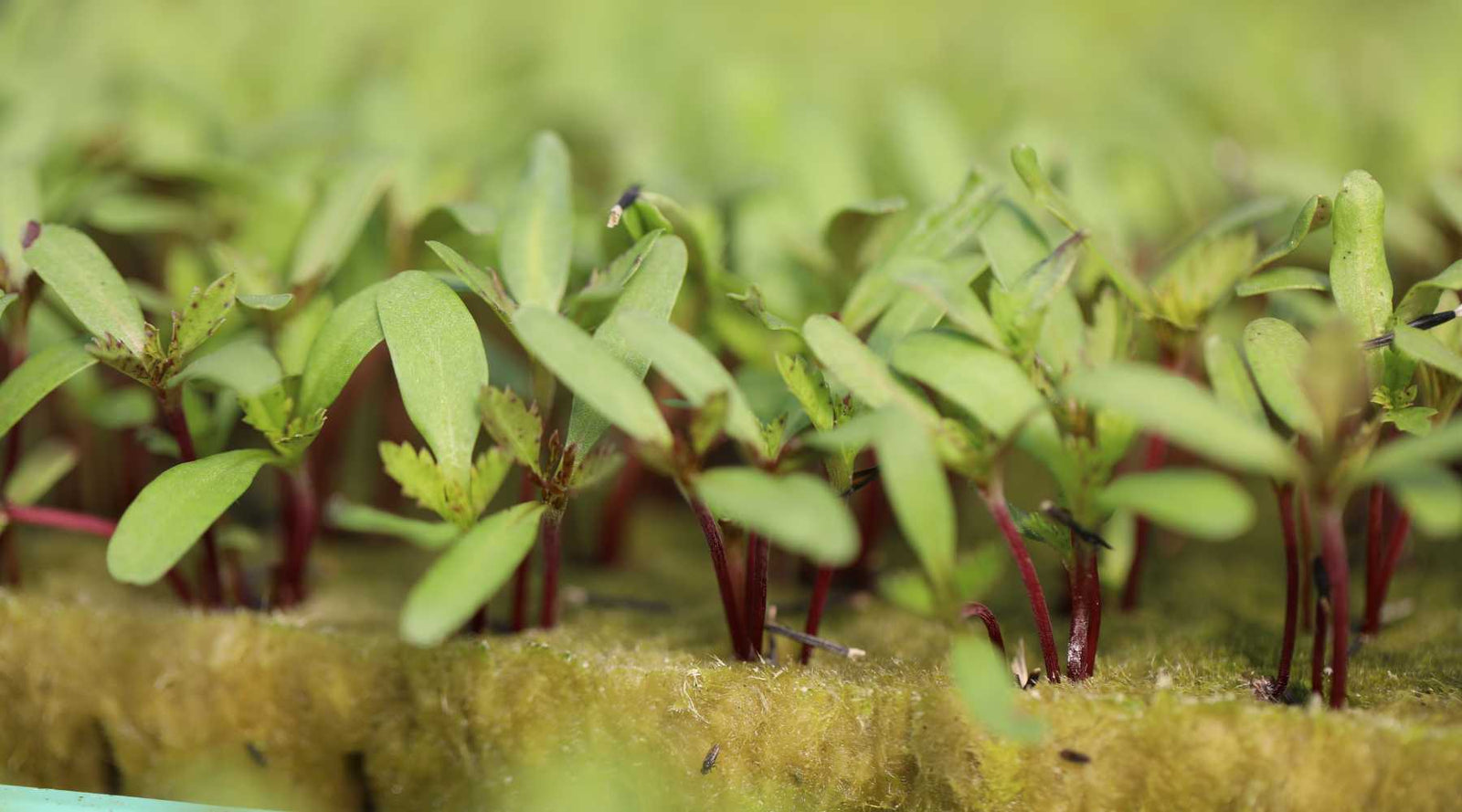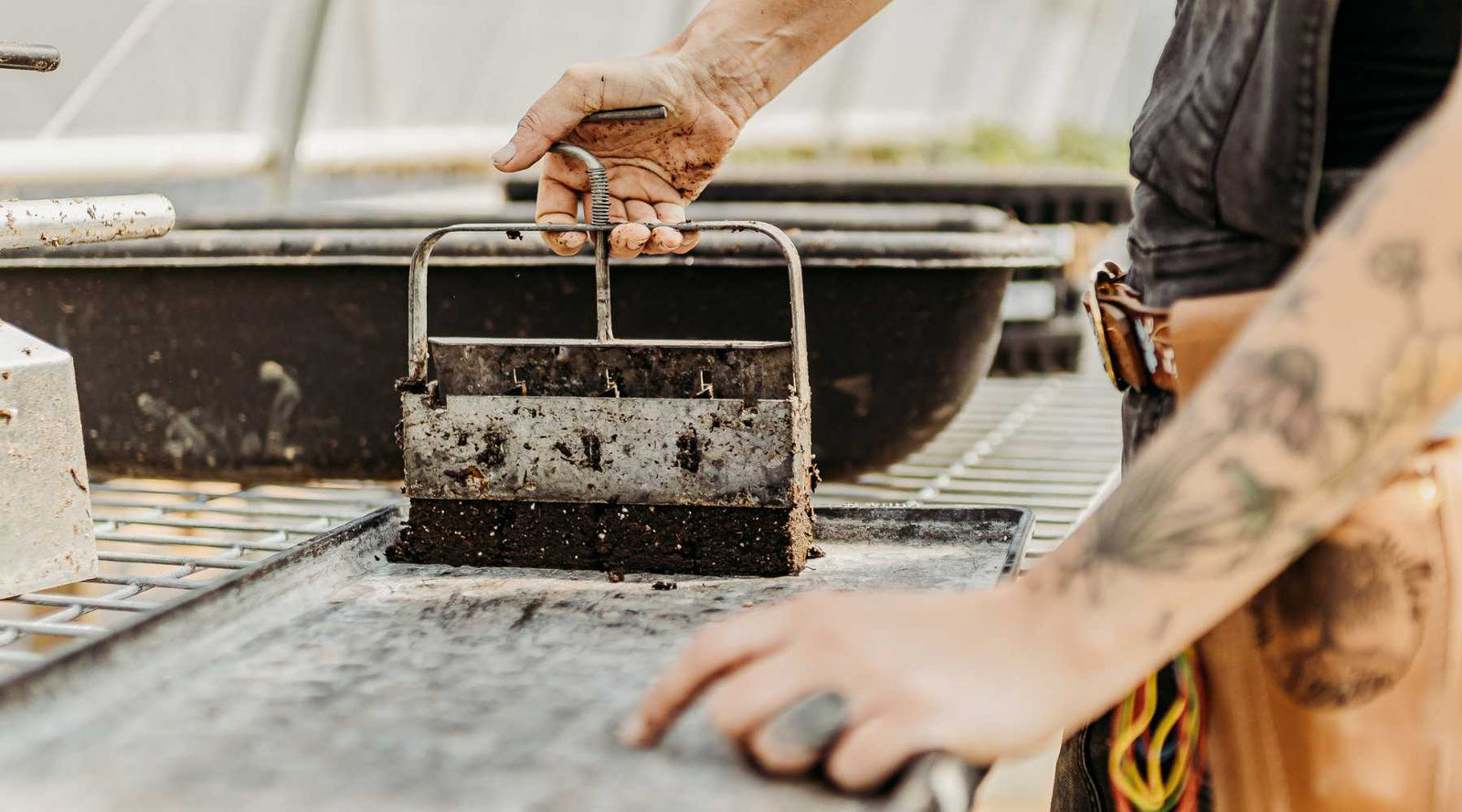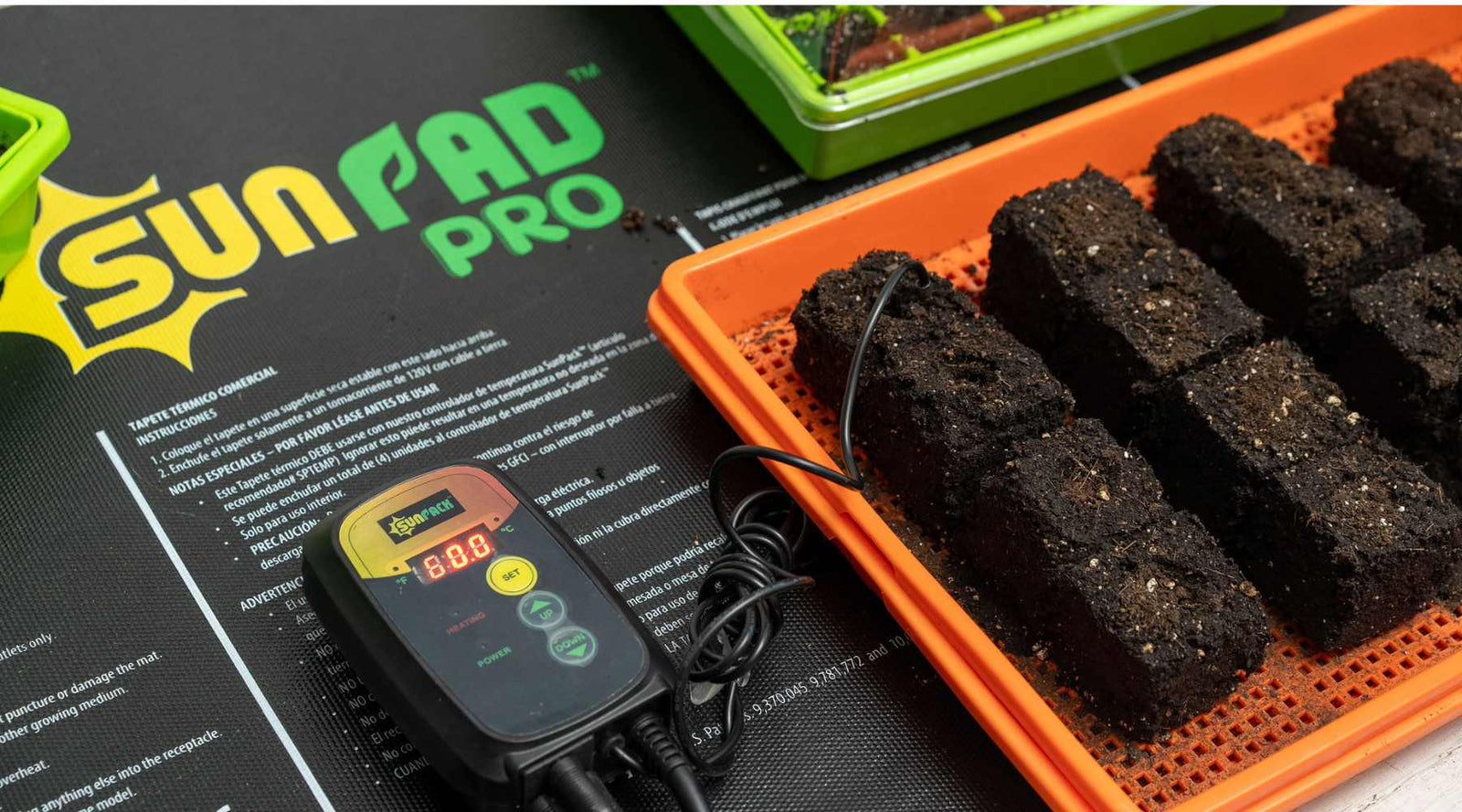Free Shipping on Orders over $75 to the Contiguous US
Free Shipping on Orders over $75 to the Contiguous US
Hydroponic Growing Mediums: How to Plant into Rockwool Cubes
September 02, 2025 4 min read 0 Comments

Pros and Cons of Using Rockwool Cubes as a growing medium
Pros of growing in Rockwool cubes
- Sterile medium for cloning
- Good drainage
- Excellent for seed germination
- Can use any nutrient solution
- Easy to transplant
- Easy for roots to penetrate
- Can be added to compost
Cons of Rockwool cubes as a hydroponic growing medium
- Naturally High pH
- Not sustainable
- Not biodegradable
- Potentially dangerous to human health
- Grows surface algae

What is a Rockwool cube made of?
Rockwool cubes are made from chalk and the basalt rock that is formed by volcanoes, heated to a high degree (3000℉) of heat then spun and cooled. Next, a binder is added and the substrate is flattened to form a sheet. Rockwool is often sold as a hydroponic growing medium in granulate mini blocks, starter plugs, cubes, and slabs. Their dense structure promotes strong root development making it ideal for seed starting in a hydroponic system. Although Rockwool is made from natural materials, the process is not natural making the substrate unsustainable, energy-intensive, and not biodegradable.
The physical properties and harmful chemicals of Rockwool cause skin, eye, and lung irritation and have been linked to long-term health concerns. (Environmental Protection Agency lists it as a “Group 2B” material)
Are Rockwool cubes good for cloning?
Rockwool is a sterile, manufactured substrate containing no pests, weed seeds, or diseases making it a common choice for cloning plants in a sterile environment. This also means that it contains no beneficial fungi or nutrients. This is ideal for those wanting to retain full control of their nutrient solution and regimen.
When cloning in any soilless media it is important to maintain humidity with a humidity dome throughout the rooting process. We recommend using our 6” tall humidity domes to provide growing space and ideal conditions for new seedlings and stem cuttings.
Hydroponic Gardening with Rockwool

Seed Starting Using Rockwool Cubes
Seeds are easy to plant in the 2 inch Rockwool cubes that fit inside the Bootstrap Farmer 32-cell insert tray. These typically have an indentation in the center for the seed or seeds. For smaller seeds, dip a moistened toothpick into your seeds to pick up one or two. Insert the toothpick into the indentation and twist it against the side of the hole to release the seeds.
Once all of the cells have been planted, ensure that the media is evenly moist and place under a blackout dome until the majority of the seeds have sprouted.
Planting clones in Rockwool cubes
Planting softwood clones in mineral wool work very well because of the moisture-retaining properties. When a new cutting is starting to form root buds, drying out could send the cutting back into survival mode instead of new plant development. To plant clones, use sterile equipment to take a stem cutting from the mother plant. Dip the end of each stem cutting into rooting hormone, honey, or aloe powder to protect it from bacteria. Push the cutting into the cube at least an inch deep but not through to the bottom.
The cubes can then be placed into a tray with holes or one of these mesh tray sets for the rooting period. The mesh tray will allow for easy bottom watering with the 1020 deep tray while the humidity dome will ensure proper moisture levels until roots have formed. Place the entire 1020 on a heat mat with a thermostat and keep between 70℉ and 80℉ until root growth is established.

What can I use instead of Rockwool cubes?
Sterile growing media like ProMix, soil blocks, coco coir, hemp mats, clay pellets, decomposed granite, perlite, vermiculite, peat moss, and potting soil are all viable alternatives to using a Rockwool slab or cube for starting seeds, planting, and cloning. You can take a look at other Top Hydroponic Growing Mediums here.
How often should you water seedlings in Rockwool?
Rockwool is very good at holding moisture. Its superior water retention abilities make it ideal for delicate new growth. Plants growing in Rockwool can handle daily waterings. The material of the Rockwool also allows excellent air circulation, making overwatering difficult. This makes it an ideal substrate for hydroponic techniques. Rock wool cubes are often planted into 32 cell trays and watered in a flood and drain system like this automated grow rack.
What is the pH of Rockwool?
Rockwool tends to be too basic for most plants that prefer acidic soil conditions. With a pH between 7 and 8, you must presoak Rockwool in a slightly acidic solution (pH 5.5 to 6.5) for at least an hour before use. This can be done by adding several drops of lemon juice or pH down to the water, using pH test strips to attain the correct acidity. Once in use, you need to pay attention to the pH as it can quickly shift. This is why many prefer to use coco coir instead of Rockwool.

Can I put Rockwool in my compost?
While Rockwool or any type of mineral wool is not biodegradable it can be added to compost in order to add drainage and eventual mineral content to the resulting soil. If you plan to add your used Rockwool cubes to your compost bin you will want to shred them as much as possible before mixing them in. Left whole they can persist in the soil indefinitely because mineral wools do not contain any organic matter.
Reusing Rockwool
Some growers choose to reuse Rockwool although it is not recommended because once the cubes are full of roots they can begin to harbor mold, fungus, and detrimental bacteria. If you do choose to reuse your cubes, allow the roots inside to dry completely and then sterilize them by submerging them in boiling water for at least 10 minutes. For more information on proper equipment, cleaning check out this article on How to Wash and Care for Seedling Trays.
Rockwool can be a great tool for hydroponics, cloning, and seed starting. While it does come with some limitations, it can be the perfect substrate for certain applications. For more information on ways, growers and gardeners alike start their seeds indoors, check out Seed Starting: 101 Starting Seeds Indoors For Your Garden.
Also in How to Grow Seedlings

Soil Blocking 101
April 03, 2024 8 min read 0 Comments
Soil blocking is a method of propagating seedlings that involves filling a metal blocking tool with soil and squeezing to form a compressed cube. Seeds are planted directly into the formed block. Soil blocks come in various sizes and are advantageous for air pruning roots.

How to Use a Humidity Dome for Seed Starting
October 31, 2024 6 min read 0 Comments

How to Use Heat Mats for Starting Seeds
March 07, 2025 11 min read 0 Comments
Recent Articles
- Soil Blocking 101
- How to Use a Humidity Dome for Seed Starting
- How to Use Heat Mats for Starting Seeds
- How to Transplant and Up Pot Seedlings
- Selecting the Right Seed Starting Cell Trays
- How to Wash and Care for Seedling Trays
- Seed Starting 101
- Hydroponic Growing Mediums: How to Plant into Rockwool Cubes
- How to Bottom Water Your Plants (Without Overdoing It) Step-by-Step
- Left with Extra Seed Starts? Try this.
Subscribe
Sign up to get the latest on sales, new releases and more …
